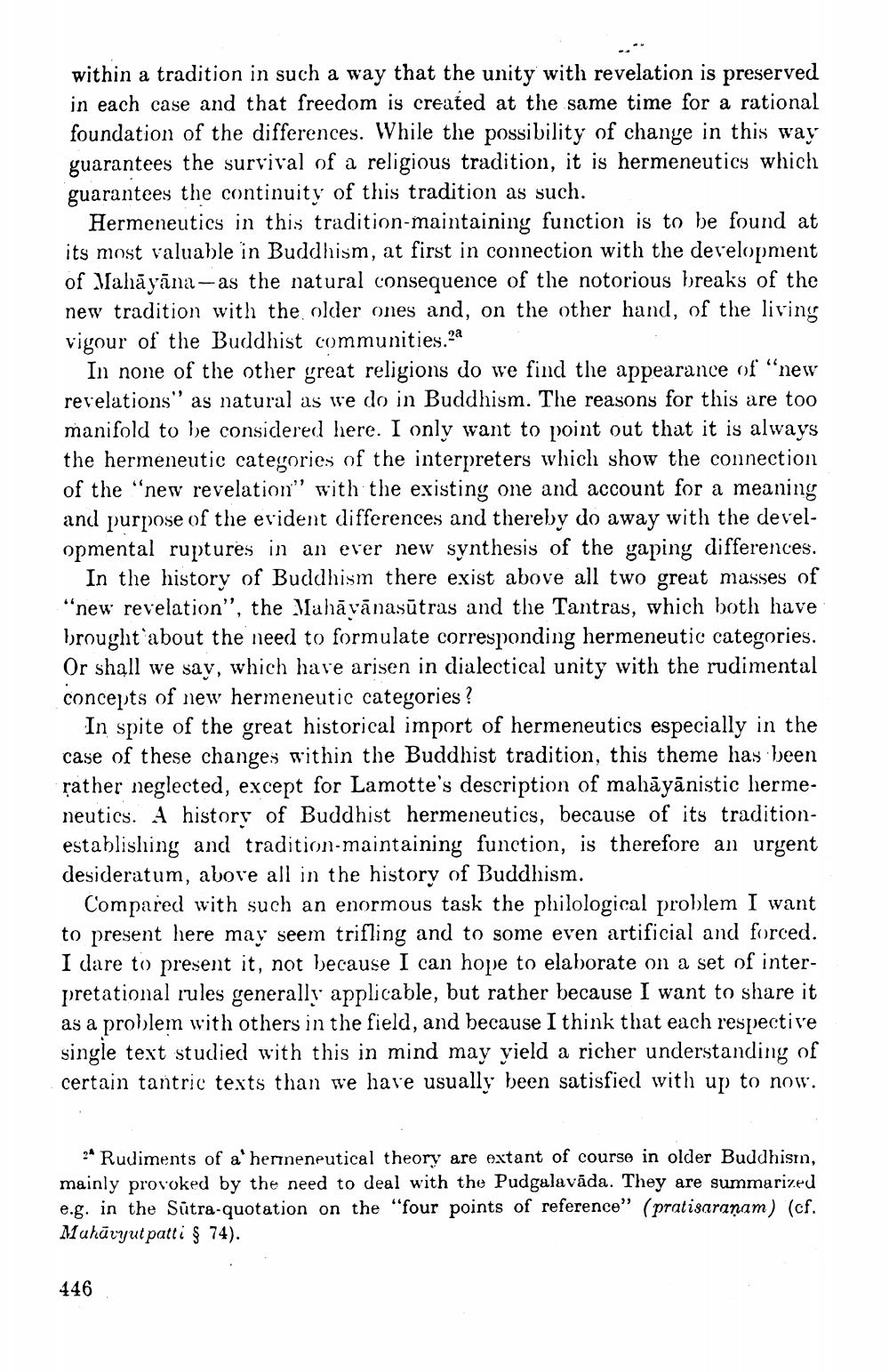Book Title: Remarks On Trantristic Hermeneutics Author(s): Ernst Steinkellner Publisher: Ernst Steinkellner View full book textPage 2
________________ within a tradition in such a way that the unity with revelation is preserved in each case and that freedom is created at the same time for a rational foundation of the differences. While the possibility of change in this way guarantees the survival of a religious tradition, it is hermeneutics which guarantees the continuity of this tradition as such. Hermeneutics in this tradition-maintaining function is to be found at its most valuable in Buddhism, at first in connection with the development of Mahayana-as the natural consequence of the notorious breaks of the new tradition with the older ones and, on the other hand, of the living vigour of the Buddhist communities.2a In none of the other great religions do we find the appearance of "new revelations" as natural as we do in Buddhism. The reasons for this are too manifold to be considered here. I only want to point out that it is always the hermeneutic categories of the interpreters which show the connection of the "new revelation" with the existing one and account for a meaning and purpose of the evident differences and thereby do away with the developmental ruptures in an ever new synthesis of the gaping differences. In the history of Buddhism there exist above all two great masses of "new revelation", the Mahayanasūtras and the Tantras, which both have brought about the need to formulate corresponding hermeneutic categories. Or shall we say, which have arisen in dialectical unity with the rudimental concepts of new hermeneutic categories? In spite of the great historical import of hermeneutics especially in the case of these changes within the Buddhist tradition, this theme has been rather neglected, except for Lamotte's description of mahāyānistic hermeneutics. A history of Buddhist hermeneutics, because of its traditionestablishing and tradition-maintaining function, is therefore an urgent desideratum, above all in the history of Buddhism. Compared with such an enormous task the philological problem I want to present here may seem trifling and to some even artificial and forced. I dare to present it, not because I can hope to elaborate on a set of interpretational rules generally applicable, but rather because I want to share it as a problem with others in the field, and because I think that each respective single text studied with this in mind may yield a richer understanding of certain tantric texts than we have usually been satisfied with up to now. 2 Rudiments of a hermeneutical theory are extant of course in older Buddhism, mainly provoked by the need to deal with the Pudgalavada. They are summarized e.g. in the Sutra-quotation on the "four points of reference" (pratisaranam) (cf. Mahāvyut patti § 74). 446Page Navigation
1 2 3 4 5 6 7 8 9 10 11 12 13 14
